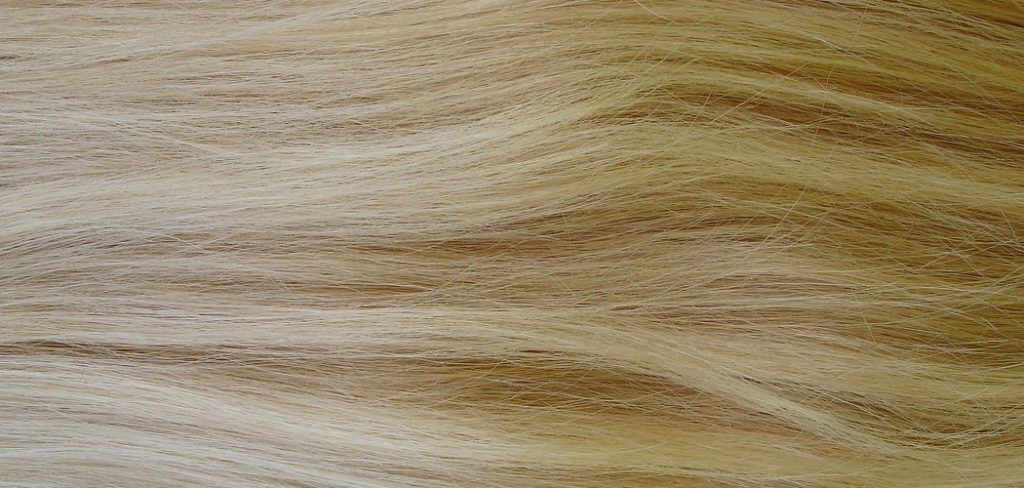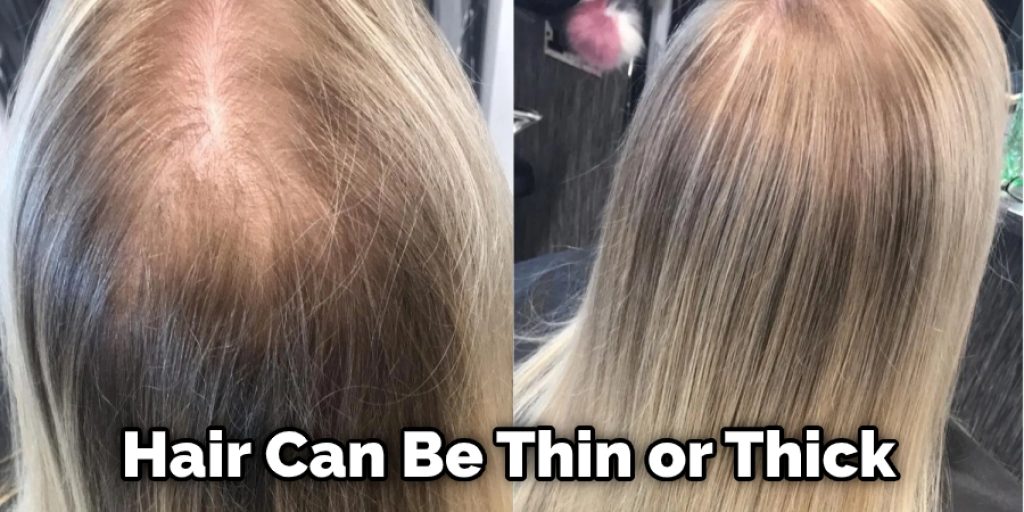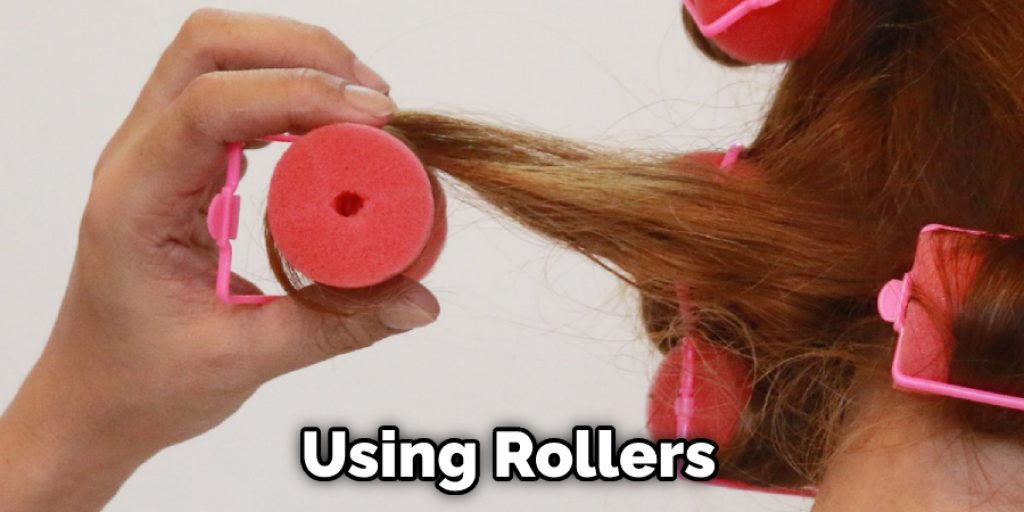How to Change Your Hair Texture From 4c to 4a
Are you struggling to manage your 4c hair texture? Are you looking for a way to make your hair more manageable and more accessible to style? If so, then you may be wondering if it’s possible to change your hair texture from 4c to 4a. There are ways to achieve the look you want, no matter your hair type.

If you have 4c hair and want to change it to 4a, you can do a few things. In this blog post, we will discuss the steps you need to take how to change your hair texture from 4c to 4a. In addition, we will also provide tips on how to maintain your new hair texture once you have achieved it. So read on for all the information you need!
What Is Hair Typing
Hair typing is a process that divides the hair into different types, most commonly known are 4a, 4b, etc. Hair typing is based on the pattern of curl formation of one’s hair strand. Most classifications for curly hair divide it into more than three types. For example, Type 1, 2, and 3 are the most common three that fall into a pattern of coarsest hair at the roots to most delicate hair closest to the ends.
Type 4 hair has been divided into type 4a and types 4b and other divisions based on curl formation. To know what type of hair they have, it is important to know certain characteristics about each type.
Understanding Your 4C Hair Type
4c hair has coiled curls very tightly. As a result, the strands are generally thin and have a natural shine to them. Since the hair is so tightly coiled, it is prone to dryness because of its difficulty retaining moisture due to its patterned structure. This results in dryness and breakage when not maintained correctly.
Characteristics of 4c Hair
- Has very tightly coiled hair strands
- Thin hair texture
- Prone to dryness due to its structure. Dull appearance due to its low shine, silkiness, and frizz level.
- Difficult to comb and must be treated carefully
- Slows down at the bottom of the strands due to its wiry structure
- Generally very resistant to straightening and styling because of its shrinkage level
4a Hair Characteristics
- Curl formation comes together in a spiral-like pattern
- Hair can be fine and thin or thick and coarse
- Can range in the color that can be black, brown, red, or blonde
- Hair is generally easy to maintain without the need for excessive styling products
- Hair has a shiny appearance when properly moisturized and nourished
- Easily gains moisture with deep conditioning treatments

How to Change Your Hair Texture From 4c to 4a: Five Effective Ways
1. Detangling
Detangle your hair when it is in its most moisturized state. This can be done overnight or when you wet detangle your hair in the shower. Your hair should be saturated with conditioner and smoothed down with a wide-tooth comb, fingers, or a pick so that each strand is separated from the next.
When your finger detangle, it should be as if you are scratching your scalp with your fingers. Do this for at least three minutes to ensure that all strands are separated, otherwise, you will have a glob of hair on top of your head.
2. Moisturizing
Detangle your hair in the shower when it is fully saturated with water to ensure that your hair strands are absorbing all other products. You can do this while shampooing or conditioning because both acts will require your hair to be saturated with either product before application.
When applying the conditioner, make sure all the strands are separated so that each strand is thoroughly saturated. After applying your conditioner, use a t-shirt or microfiber towel to dry your hair. Blot your hair by pressing downward against it with the t-shirt/towel and not by rubbing. This will ensure that your hair cuticles are not raised and frizzy.
3. Deep Conditioning
Deep condition your hair for 30-60 minutes. You can sit under a plastic processing cap or use a heating cap to deep condition your hair. The ACV rinse is an excellent way to maintain your hair’s pH after deep conditioning it to remove all the product build-up.
4. Gentle Styling
Style your hair by using rollers, Flexi rods, or twist-outs. These are low manipulation styles that will allow your hair to stretch without breaking off at its weakest points. Even though these are low manipulation styles, they may require you to detangle and moisturize your hair before applying them.

5. Protective Styling
Use a satin bonnet or scarf to cover your hair at night when you sleep if you find that your hair is dry in the morning after deep conditioning it overnight. You can also use a satin bonnet or scarf at night if you find that your hair is too wet to sleep on, as wearing a silk cap to bed can cause your hair to break off easily.
Some Tips and Suggestions
1. Make sure your hair is washed with a sulfate-free shampoo before beginning this process. Using a sulfate-free shampoo will ensure that the cuticles remain sealed and your natural oils are retained, which results in less breakage during detangling.
2. Never use a wide-tooth comb or brush when transitioning from 4c to 4a hair texture. Using a wide-tooth comb or brush will cause breakage and damage to the hair. Instead, try using your fingers or a pick comb when detangling your hair. You can also opt for purchasing Micro Rows.
3. A good leave-in conditioner is essential during this process. A leave-in conditioner will help enhance your curls, especially if you plan to wear twist-outs or braid-outs for your 4a hair texture.
4. You can benefit significantly from protective styling once you’ve completed the transition from 4c to 4a hair texture. Protective styling can help to avoid breakage, shedding, and tangles.
5. If you do not wish to wear your hair in its natural 4a state and would like to go straight to wearing a weave, then that is fine too. This will not negatively affect your transition from 4c to 4a hair texture.
6. You can use this same process while transitioning from 4b and 4c hair textures while wearing a weave or roller set, as well!
Does Your Curl Pattern Change as It Grows
When you have a curl pattern, it will usually appear differently when your hair is wet and dry. This means that if you take a strand of hair from the front of your head, which will usually have different curl pattern characteristics than the hair at the back, and hold it up to the light, you may observe a difference in its curl pattern. This means that curl patterns can change as your hair grows.
How To Get The Perfect Straw Set Curls
Curly hair types have been a hot topic in the natural hair textured realm for years now. The term “curly” is used loosely to define any of several coily, kinky, wavy, and anything else that doesn’t fall into an afro.

Curls seem to be preferred amongst women with tighter textures because it adds definition and volume to the hair. However, not all curly textures are created equal! I know because I once had 4c hair that is very tightly coiled, making it difficult to deal with at times even though I have a love/hate relationship with my curls.
Can You Naturally Change the Texture of Your Hair
Hair texture does not change naturally, but it can be changed because the cuticle layer of natural hair is very thin, and therefore can be manipulated to look like different textures. I do not advise that people change their hair unless they know what they are doing. Many people who attempt this will result in some degree of damage, and the results are always unpredictable.
Conclusion
The texture of your hair results from the curl pattern and thickness. This article has discussed how to change your hair texture from 4c to 4a and what causes some people’s hair textures to be different from others.
If you have been struggling with your natural textured hairstyle for years or want something new, this may help! Stay tuned for more blog posts on other topics soon. Thank you so much for reading our blog post today. We hope it was informative and helpful!
You May Also Read: How to Add Texture to Asian Male Hair




